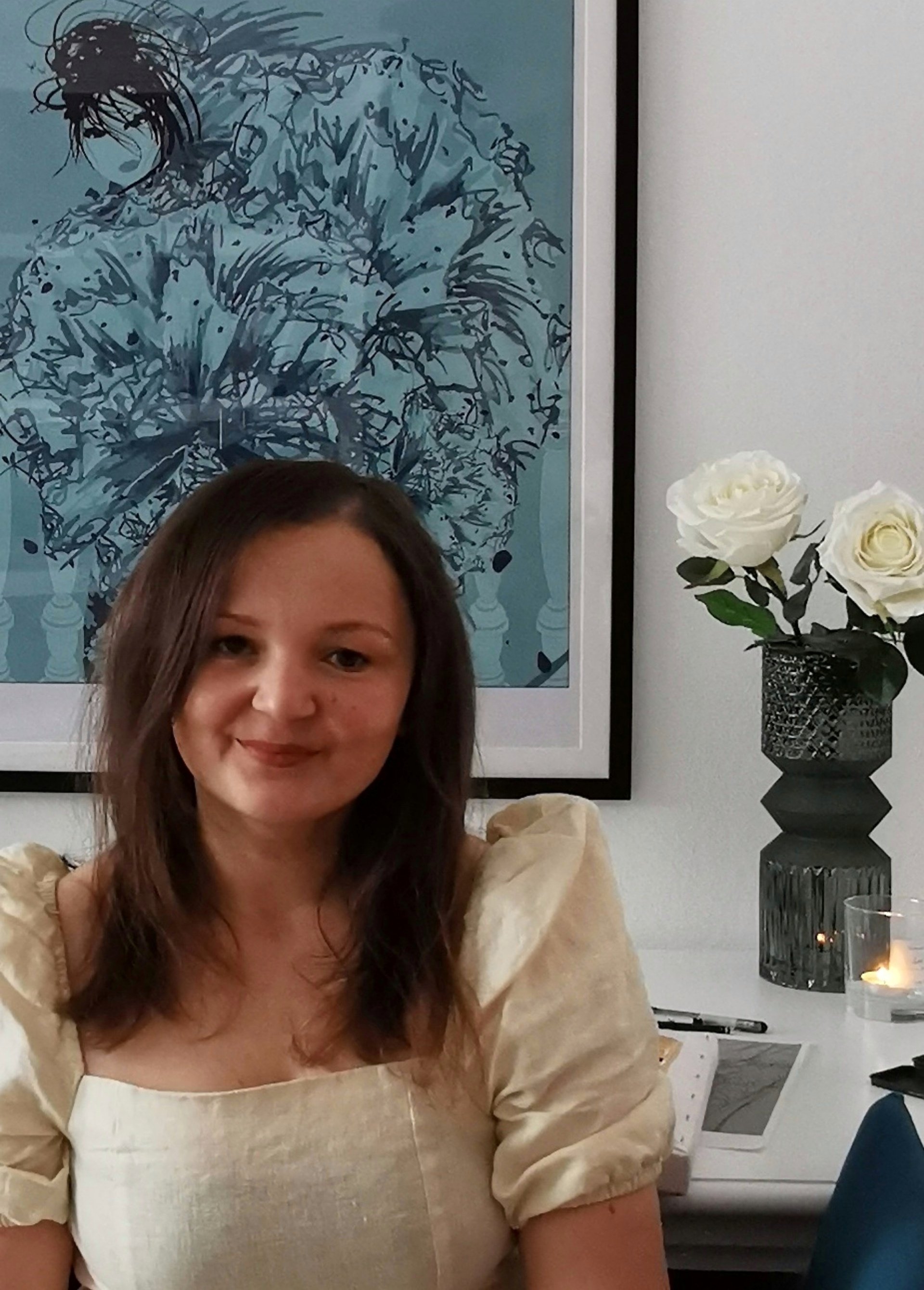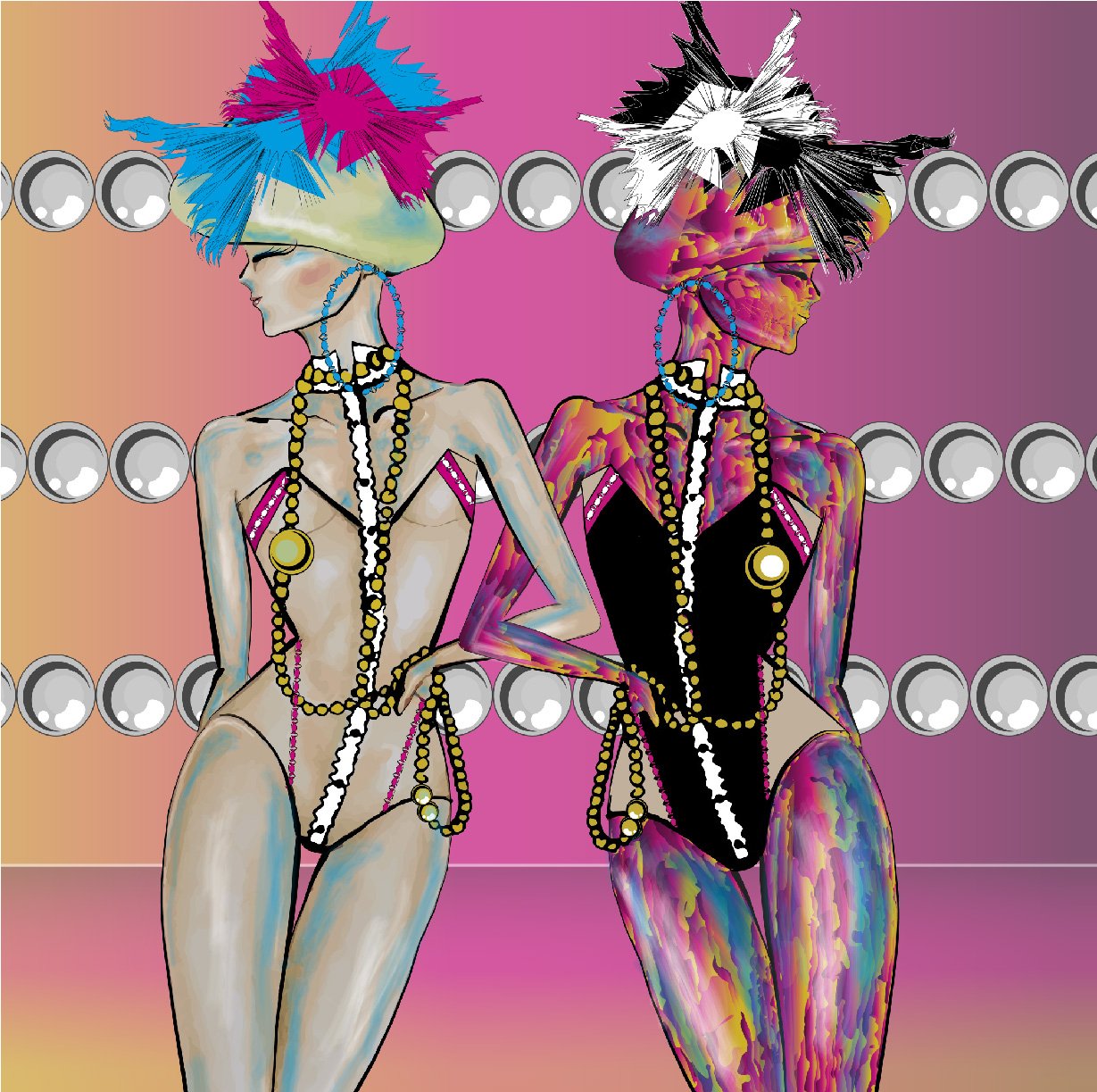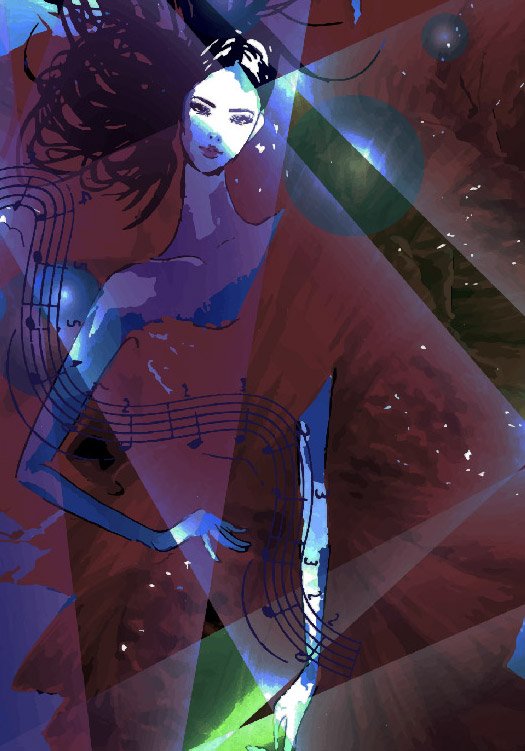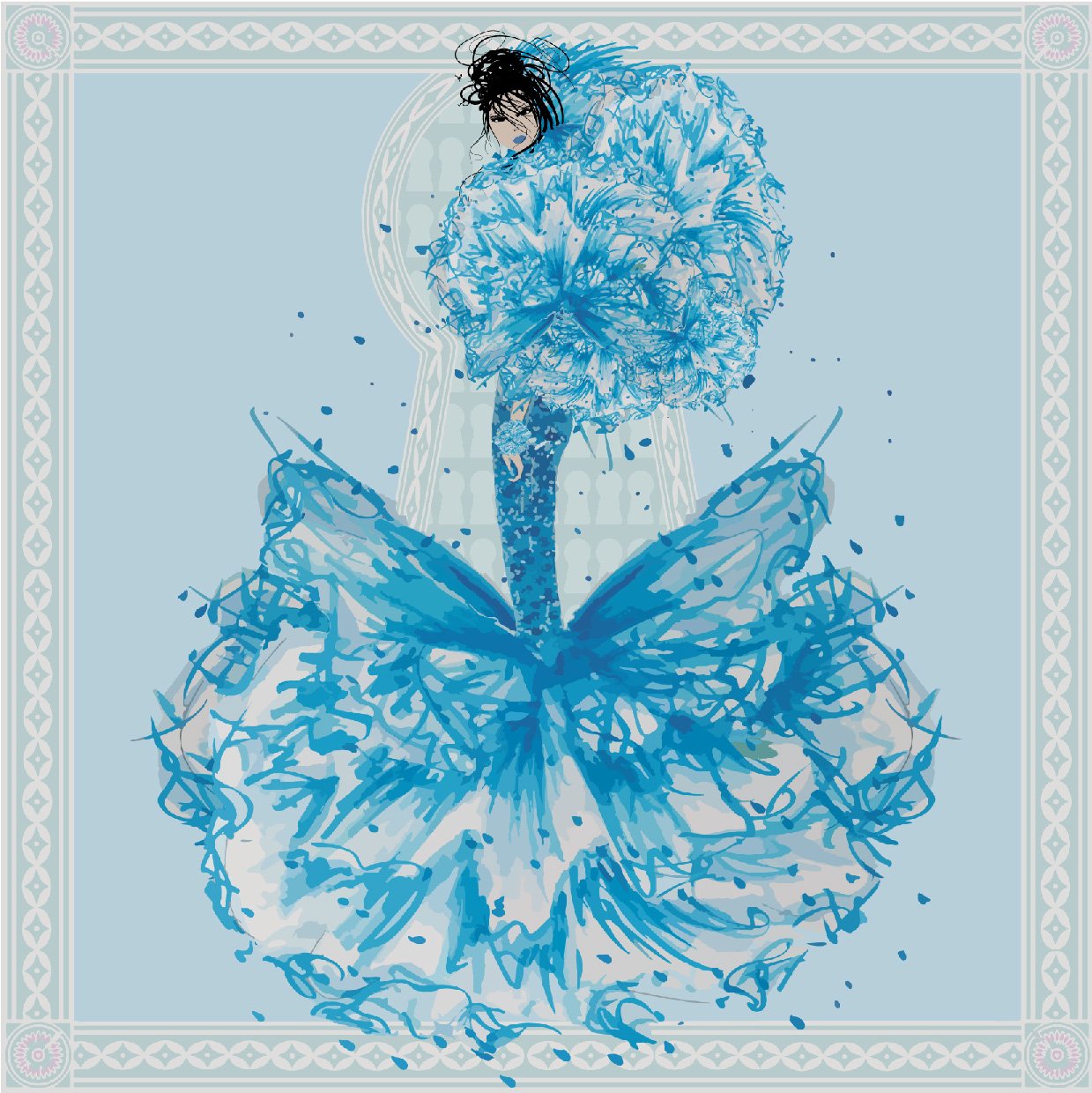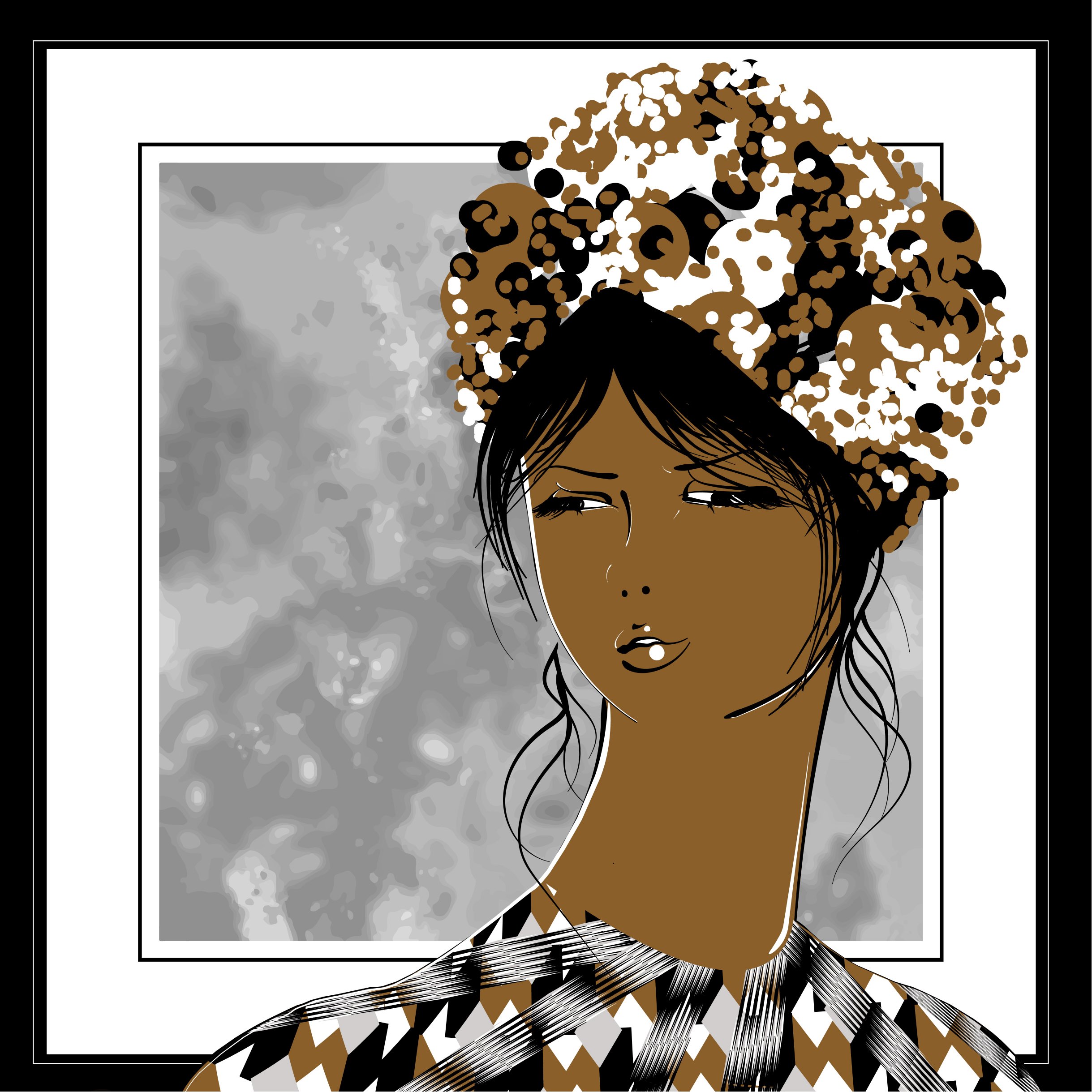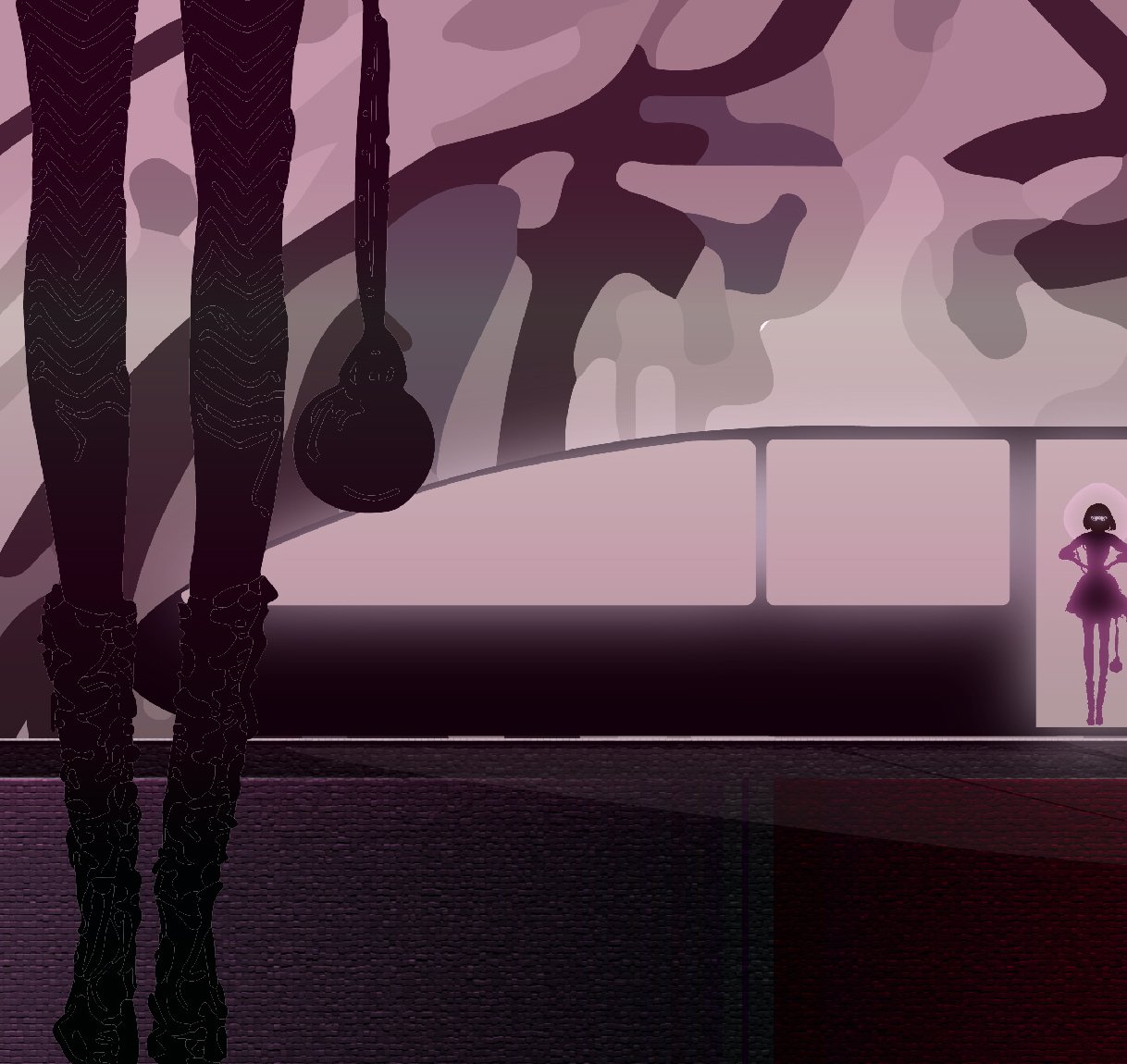Interview
Alexandra Eva Gonczewski
Alexandra Gonczewski is a German illustrator and contemporary artist based in Cologne. She has always had a deep need for visual expression and an enthusiasm for fashion. She drew her first fashion figures in her early childhood, and started to develop her skills and knowledge autodidactically.
Her interpretation of the world of fashion is inspired by music videos, retro black and white fashion photography, the drama of the old Hollywood era, a feeling of wanderlust, and the tension between opposites, such as striving for perfection through adaptation and unconditional, passionate self-expression.
Her fashion sketches are drawn analogously with pencil, ink and markers. All illustrations are digitally remastered and are characterized by a playful and intuitive use of digital tools, light and shade.
Alexandra has been visually impaired since birth. Her right eye is blind and the left one has low vision. Nevertheless, she is able to perceive a wide range of colors and contours as long as her distance to the object is small. In all digital works, she uses tools for enlargement.
What is your background and how did you start your journey in the art world?
“I was born in Poland but moved to Germany together with my family when I was one and a half years old. As far back as I can remember, drawing has always been a natural part of my everyday life. It allowed me to create new worlds which were modeled along a rather utopian ideal concerning society and the political system. I mostly drew female characters and imagined what life they would be living, were they to become real. That already says a lot.
Also, fashion has always been a central part of my drawings, because it enables us to show ourselves in a way that mere nudity could never achieve. After an intensive phase of drawing Manga’s, I started to invest more time and interest in fashion and trend cycles. I was fascinated by the realization that there was a certain motion in our society which we could feel. At first, I had difficulties seeing myself as an artist or a fashion illustrator because I never thought that would be possible given my visual impairment. It took some time to make me believe in myself. I am blind on my left eye and I can see only about 4% with my right. I can recognize colors and shapes as long as the objects are of a certain size, or are close enough. I started to focus and taught myself new abilities and techniques. I found Nancy Riegelman's 9 heads method very helpful in improving the proportions of my Croquis (drawn fashion figurines). I do not however have an academic degree in arts.”
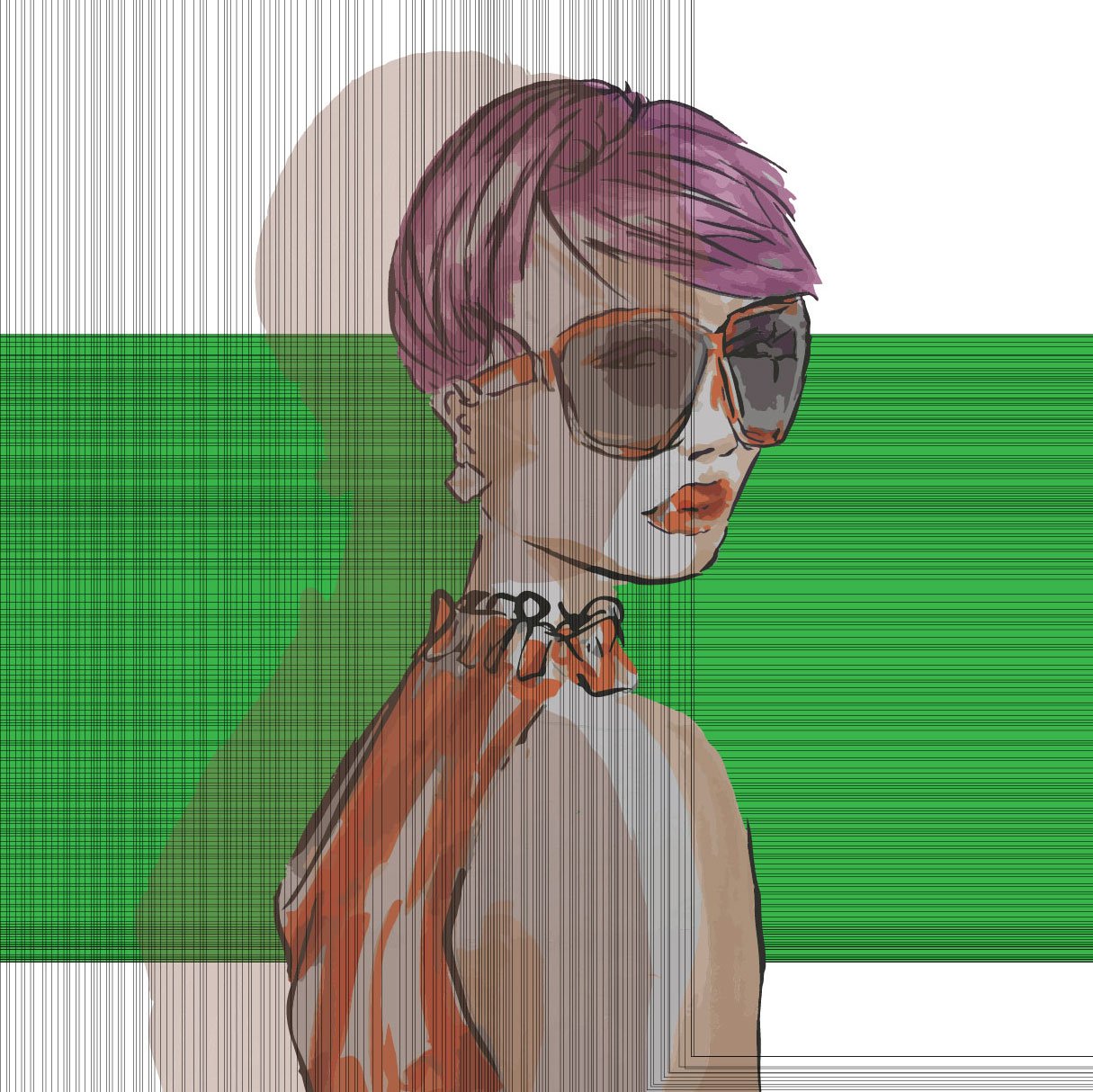
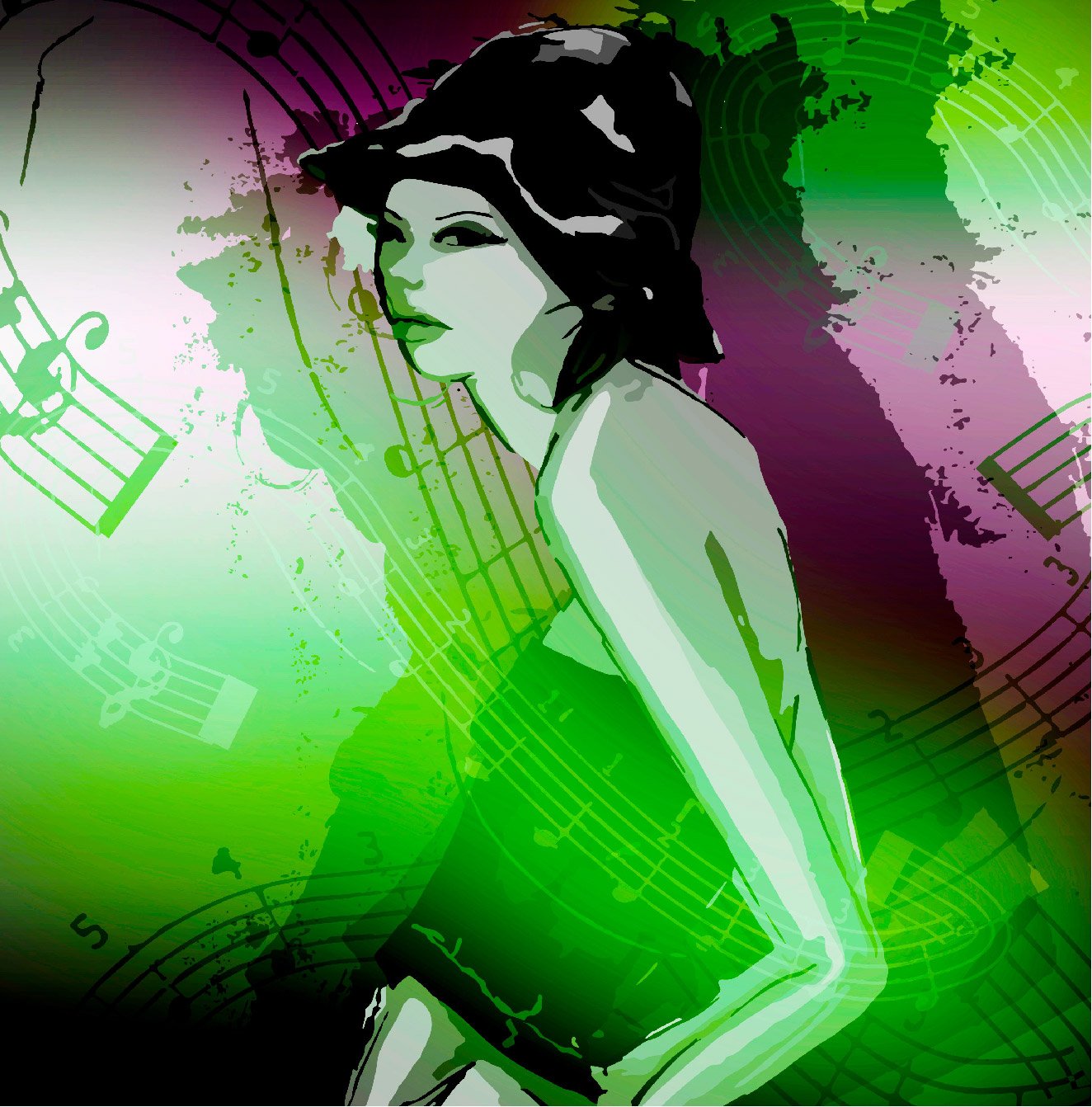
What does your work aim to say? Does it comment on any current social or political issues?
“My works do not deal with specific political or societal topics, they deal with human life itself. The things that move us: fears, dreams, needs and how we cope with them coins our way of living together on many levels. We live in a time in which time itself has become a luxury. It becomes harder and harder to see and just enjoy the beauty of a moment. Many people know this feeling. I see it as my task to capture the subtle beauty of a moment or an atmosphere to remind the spectator of what is really important, and to make them feel content. The more satisfied we are with our lives, the better political and social decisions we can make. Some might see that notion as naïve, but we can’t afford to pretend it isn’t true — we need to have hope.
My work also deals with the tensions that build up inside of us when opposing desires and thoughts arise, such as the wish for unconditional self-expression and a simultaneous striving for perfection through conformity.”
"The process of drawing is what really counted for me when I was younger, not necessarily the finished work. That is why I got rid of every finished work. The only ones that escaped the bin are the ones my mother saved.”
Which current art world trends are you following?
“There is indeed a trend that has caught my interest. At the moment, I’m looking into NFT art and I’ll be selling my first NFT collection shortly. The motives that make people buy a piece of art that does not actually physically exist fascinates and also bewilders me.”
Do you plan your work in advance, or is it improvisation?
“In most cases, I fully commit to my established time frame, and I set myself alarm clocks for the breaks. That is vital because I forget everything else when I’m working, and my work takes up a lot of my energy.”
What process, materials and techniques do you use to create your artwork?
“When I’m planning a certain piece of art, I listen to music. I have playlists for many different moods and places that inspire me and set the right atmosphere. Every work of art is first created in an analog way on a piece of paper. I always use thick paper of at least 150 grams. Due to my impairment I have to be very close to the paper and I only see a small sector of it. I mostly use marker pens with soft brush-like tips or very broad flat tips. Additionally, I work with pencils, ink and watercolor.
In a next step, I re-master all my works digitally by using Adobe Illustrator or Photoshop. I also work with Procreate. What I really love about digital tools is that you can create very unusual brushes that can add an abstract direction to the original drawing. Also, the zoom function of those programs is really helpful to me.”
What does your art mean to you?
“I see my art in the first place, as a chance to be independent and self-reliant in an area that fulfils me. I know many other people with visual impairments and I think it’s nice that there are a few opportunities for them, so that they are able to live an autonomous life.
Nevertheless, we learn at an early age that our career choices are limited. This limitation frustrates many, as their personal strengths cannot be brought to bear in their careers due to prejudice. I am of the opinion that people with disabilities who are willing to go the extra mile should be given the same opportunities as everyone else.
I also find it fascinating that every artist, no matter what they create, is able to express feelings and thoughts in his/her own special code, and still can be understood. Is there a more authentic way of communication?”
What’s your favorite artwork and why?
“When I was 13 or 14 years old, I discovered a piece of art by Jason Brooks in a magazine. This piece made me want to work with digital tools and add a new perspective to my illustrations. Unfortunately, I do not know the title of the picture, if it even has one. There is not just one art epoch that inspires me. I try to stay free from bias to keep my enthusiasm for new experiences as high as possible.”
Please tell us about any previous exhibitions you found noteworthy and wish to share.
“Although I have been creating art for many years now, I only recently accepted that despite my impairment I’m good enough to consider it to be more than only a hobby. There are still a lot of professional experiences I need to go through before I can have my own exhibition.
Last year, in 2021, I visited the exhibition Captivate! at the Kunstpalast in Düsseldorf. The exhibition, curated by Claudia Schiffer, showed fashion photographs of the 90s. In the first exhibition, they gathered legendary fashion photographers, designers as well as their famous model colleagues, whose energy and visions together shaped the decade.”

